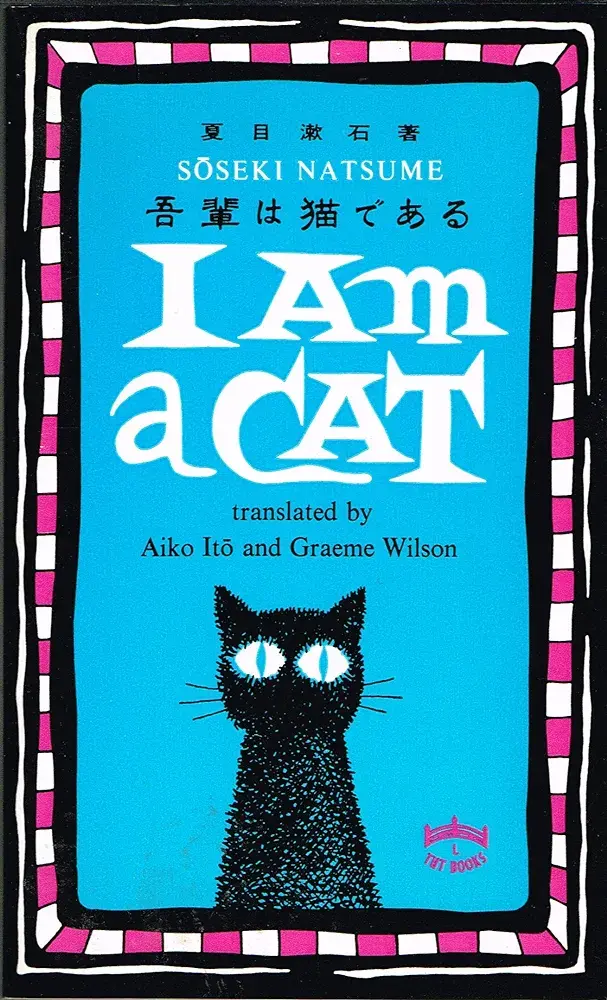Would this even work? Lol
Now run your straw through a concentric larger straw and pump -30C glycol through the annulus. You can get your 96C tea down to 54C in seconds! Think of the efficiencies gained!!
Can I add RGB?
You’d be irresponsible not to
Of course! That increases efficiency by 69%!
Nice.
No! Not my annulus!
it’s more likely than you think
Proctologists hate this one simple annulus trick
mmm… annulus
- Use a metal straw to improve heat conduction.
- Increase the surface area and time for heat extraction to occur with extra loops in the water part (do they make metal silly straws?)
- Get really fancy and use a counterflow chiller: create a two layer straw, where tea goes through one layer while cold water goes through the other layer in the opposite direction (obviously with an outlet somewhere besides your teacup)
But the goal here isn’t to maximize cooling, you still want the tea to be hot, just drinkably hot rather than dangerously.
You need to calibrate your coolant water temperature to provide the ideal amount of cooling for you.
Time to design a radiator.
- Use a metal straw to improve heat conduction.
While metal is a better conductor of heat, when looking at the effective rate of cooling you need to take the wall thickness into account. I think a plastic straw with it’s micrometer thin walls is unbeatable.
Edit: I have trouble finding information on wall thickness of drinking straws, it one source says they are 130-250 μm thick. That is thicker than I expected.
Counterpoint: drink a cold drink through a plastic straw and a metal straw, with your fingers on the straw. See which one feels cooler.
Leave a block of wood and a brick of steel in a freezer for 24 hours and see which one feels cooler - they’ll be the same actual temperature (at least negligibly close the longer they’re left) but the metal will feel immensely cooler to the touch due to its higher capacity for heat transference.
Doesn’t that just agree with what I’m saying? The metal is going to transfer heat more easily than the plastic
There are two compounding factors
-
heat capacity: any short term experiment will measure heat capacity first, conduction second
-
locality of contact: contact along the whole length of the straw eliminates heat conduction along the length of the straw. A single point of contact (holding the straw with fingers instead of the whole hand) behaves differently.
I thought plastic straws were thinner than 0.2 mm, so maybe the metal is actually better.
It’s fun arguing about these technicalities though!
-
This man HVACs
Very low surface area heat exchanger you’ve got there! Gotta do several more loops under the water to get efficient heat transfer.
Hear me out, what if we added racing stripes to the straw?
Some LEDs on the bowl would probably be more efficient.
its also very low volume so i think it will be fine for the job
Yeah, at slow enough drinking speeds there would likely be some noticeable difference in temperature after passing through the radiator, it probably just won’t be massive.
Well that’s why they invented crazy straws after all!
I love plastic straw in hot tea!
Y’all trying to come up with ways to cool it while I’m using my 5 temperature setting electric kettle to get the water hot enough to steep tea, but not boil.
But can you play snake on your kettle
I bought a kettle with a temperature selector. I have one degree of precision. Which is often overkill. It’s surprisingly useful to be able to heat water at non scalding temps. Especially for cleaning tasks, actually.
Also good for not ruining (even cheap) tea.
Matcha 70C, green 80, I do my coffee at 85C.
That sounds luxurious. Do you love it?
Yes, and it wasn’t very expensive.
[This comment has been deleted by an automated system]
Even the lowest steeping temperature is too hot to drink IMO. And with black tea you should be steeping it at almost boiling.
Motherfucker never heard of ice cubes
Ice cubes can water down your drink. Use a large, frozen, steel ball bearing so you can instead get some nice heavy metal poisoning to accompany it.
(Don’t actually do this)
You should use lead instead of steel. The higher density makes the effect longer lasting.
It also makes it sweeter!
There are alloys of stainless steel (I forget the numbers off the top of my head, it’s been more than a few years since I worked in that field) that are perfectly fine and compatible for food/grade hot-process work.
I have these things called cold rocks for my scotch - they’re some kind of stone or earthenware dice-sized cubes that you leave in the freezer. Bought them at an alcohol warehouse shop we have here in Australia called Dan Murphys. They’re great for cooling without diluting.
I have some of those too. Problem is they’re nowhere near as efficient at cooling as ice cubes are and never cool my drink enough. It’s the melting (phase change) process that does the majority of the cooling with ice cubes, which you miss out on with these solid blocks.
I forget the exact maths, but a quick googling reckons it takes something like 84kJ to change the temperature of 1kg of liquid water by 20K, but changing the temperature of the same amount of ice from 0K ice to 20K water takes nearly 420kJ, or roughly 5 times more energy, which is why they’re so much better at cooling drinks…
304 and 316 are considered food safe. 316 is what most industrial food processing machines use. 304 is somewhat easier to machine, and cheaper, so lots of components are also made from that but it has less corrosion resistance.
Yep those are what I was thinking of; thanks for the cover, internet friend!
Also now I recall we were looking at pressure vessels made of Hastelloy; that was stupid expensive but they had corrosion-resistant properties that were very attractive for that application. And then management bought them and told us to deploy them for a process that was basically a low-temp filtration process. wtf, ok sure, the material is compatible but Hastellonis way overkill. Whatever, it’s your money to burn but damn.
I haven’t machined hastelloy but that’s some expensive shit. That seems like a poor use of that alloy though, but whatever lol as you said it’s their money.
I recently did a reactor that was supposed to be 1200C at 30,00PSI and wanted to use hastelloy X (alloy used in nuclear reactors) for that, but budget made us use 316 at a stupid wall thickness and lower the pressure to 5,000psi @ 800C. Same shit but opposite.
They’re not a monster
I use wine balls when I want iced coffee lol
Swine balls work in a pinch.
I know I’m fat but you didn’t have to call me swine
That’s actually a great idea
Just get one of those handy cupholders that come free with lots of electronics:

They also work for quick thawing.
Hmmm microplastics soup
Wouldn’t the plastic straw melt in the hot tea? Maybe need metal or silicone straw adapter hooked onto plastic straw in heat exchanger 🤔
Don’t think most plastic straws would melt, but they would probably soften and might infuse more chemicals into your beverage than it would if it were cold. At this point I’d just go for the obvious solution of repurposing an old heat exchanger from an AC unit or something. The strange taste will go away after a few times (probably).
Personally I would use my knowledge in aerodynamics by blowing on the tea before sipping
you trying to make the tea fly?
I think they’re trying to use their knowledge of convective heat transfer vs conductive heat transfer.
No no, he’s making sure to provide downforce not lift.
Tasty coolant flavoured tea
Yeah, I won’t drink anything hot out of plastic anymore: Corpos lied to us for decades that it was safe but it wasn’t and now we’re full of all sorts of terrible shit. The straw probably wouldn’t deform, but it probably would leech all sorts of chemicals into the water.
It’s plastic not wax
Oh dear this had me I stitches. Can’t explain it. It tickled me just right.
It has “that breast implant is an animal” vibes.
Here is an alternative Piped link(s):
“that breast implant is an animal”
Piped is a privacy-respecting open-source alternative frontend to YouTube.
I’m open-source, check me out at GitHub.
Paper cups are wax coated, so it also depends on the wax as well.
It turns out plastic can melt. Crazy, I know
The melting point of plastic is 300+ degrees Fahrenheit. Even if you tried to drink tea that was still boiling in the cup you’d damage your mouth pretty good but the plastic straw wouldn’t melt.
This isn’t exactly true. Plastic is all different types of things and there is no one melting point, for example PLA (poly lactic acid) which is commonly used for things like disposable drink lids has a glass transition temperature of 60c (140f). Abs (acrylonitrile butadiene styrene) has a glass transition temperature of 105c (221f).
While the full melting point for these two polymers is higher than the glass transition, at those temps, your straw will start turning into a nice wet noodle.
The melting point isn’t helpful here because it defines the point at which the object turns into liquid, not the point where it deforms or gets damaged.
A drinking straw like that is likely made out of polypropylene with a melting point of 320F. Though the comment I replied to said “melt” specifically, if you wanted to reference the point before it begins to soften, PP has an operating temperature of almost 200F still. So that includes any hot liquid up to the point of near-boiling, which will be a bigger deal to your mouth than the straw. Thats why it’s used in drinking straws and the like.
Just go full metal. Better heat transfer.
MacGyver at Wish
MacGyver gets bored when he doesn’t have something important to do.
It would cool it down, but how much would be the question.
Fridges cool your water in them using the same principal, a loop of tubing is in the fridge which cools the water as it passes through.
It would entirely depend on how fast you suck.
Even moderately cool water would work if you just drank slow enough, and ice water wouldn’t work if you drank too fast.
I’m sure some engineer could do the math on how cold the water would have to be to cool boiling water at maximum vacuum.
I suck pretty hard.
As well as the medium of the straw. It would cool much faster if you had a stainless steel straw versus plastic, which would insulate better.
Just mix them together.
but am patient
Assuming the water is cooled, yes, this would decrease the temperature of the tea. Probably not by a ton, but it would make a difference.
It just has to be colder than the tea, not necessarily “cooled”. As the tea passes through it, some heat will dissipate to the water.


















